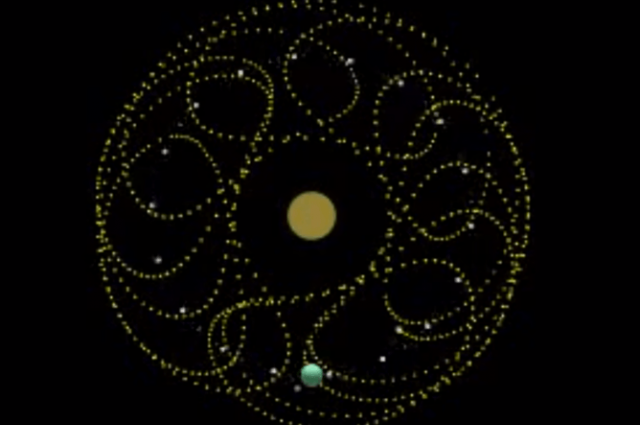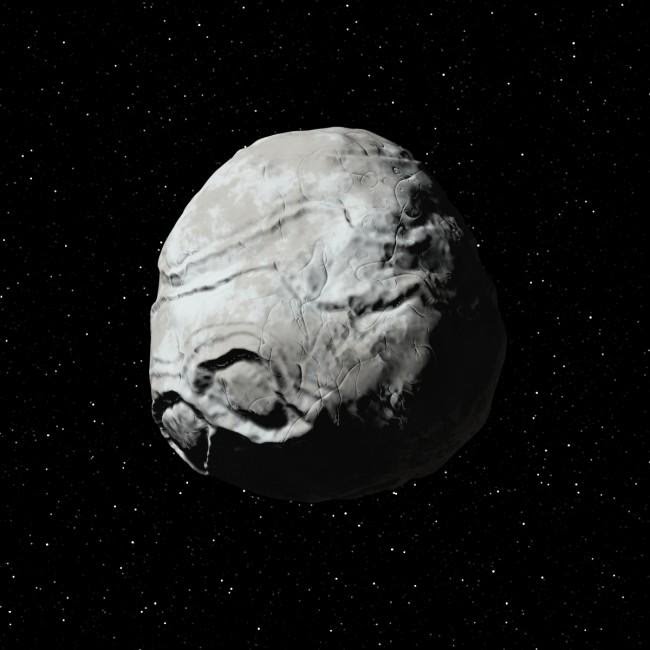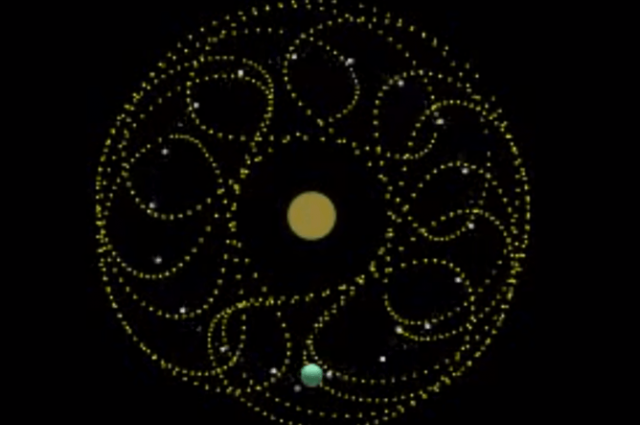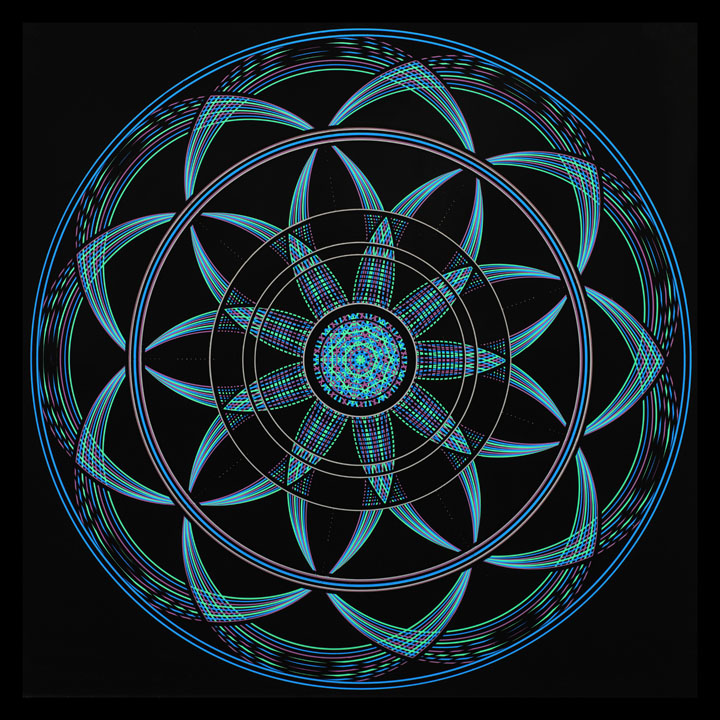It looks like you're using an Ad Blocker.
Please white-list or disable AboveTopSecret.com in your ad-blocking tool.
Thank you.
Some features of ATS will be disabled while you continue to use an ad-blocker.
share:
The moon is my favourite object in the sky and its something I know a bit about. So I was suprsied to find out that the moon is not the earths only
natural satalitle. 3753 Cruithne was discovered in 1997 orbits the earth in what is known as a quasi-orbital satellite. That is to say it sweeps
around the solar system in a 3D horseshow orbit.

For those that can watch the video of 3753 Cruithne in orbit its worth it. It shows the complex 3D orbit that it follows.
No one really knows what this heavinly body looks like it is only 5km across and appears as a few blurry pixals in images. It will get close to earth in 2700 years and be even closer to Venus in about 8000 years. If it hit earth it would cause an extinction level event.

www.iflscience.com...
Purp..

For those that can watch the video of 3753 Cruithne in orbit its worth it. It shows the complex 3D orbit that it follows.
No one really knows what this heavinly body looks like it is only 5km across and appears as a few blurry pixals in images. It will get close to earth in 2700 years and be even closer to Venus in about 8000 years. If it hit earth it would cause an extinction level event.

www.iflscience.com...
Purp..
originally posted by: purplemer
The moon is my favourite object in the sky and its something I know a bit about. So I was suprsied to find out that the moon is not the earths only natural satalitle.
Technically, Cruithne is not a moon of Earth.
Cruithne is in a normal elliptic orbit around the Sun. Its period of revolution around the Sun, approximately 364 days at present, is almost equal to that of the Earth. Because of this, Cruithne and Earth appear to "follow" each other in their paths around the Sun. This is why Cruithne is sometimes called "Earth's second moon".[12] However, it does not orbit the Earth and is not a moon.
en.m.wikipedia.org...
but in this video it doesn't appear to be orbiting earth
and that picture looks like C-3PO's head
and that picture looks like C-3PO's head
originally posted by: Dr UAE
but in this video it doesn't appear to be orbiting earth
That's because it isn't.
Cruithne orbits the Sun on a normal elleptical orbit. The horseshoe trajectory is its motion relative to Earth.
An analogy is Venus' orbit. It orbits the Sun on a normal orbit, but relative to Earth, its trajectory looks like a flower:
This doesn't mean Venus orbits the Earth on a Flower Orbit.
a reply to: swanne
I don't think it's normal if you go around the sun in about kidney shaped orbit?
Although I never heard of this asteroid before . And it seems it half orbits both the Sun and the Earth in some way.
I would call it the "make up your mind flying rock!" but i guess that will take billions of years before he does..
Great thread I learned something new.. thank you..
Peace
Cruithne is in a normal elliptic orbit around the Sun. Its period of revolution around the Sun, approximately 364 days at present, is almost equal to that of the Earth
I don't think it's normal if you go around the sun in about kidney shaped orbit?
Although I never heard of this asteroid before . And it seems it half orbits both the Sun and the Earth in some way.
I would call it the "make up your mind flying rock!" but i guess that will take billions of years before he does..
Great thread I learned something new.. thank you..
Peace
edit on 0b59America/ChicagoThu, 26 Feb 2015 06:44:59 -0600vAmerica/ChicagoThu, 26 Feb 2015 06:44:59 -06001 by 0bserver1 because: (no reason
given)
a reply to: purplemer
So this asteroid gets pulled between the earth and the sun's orbits, more frequently orbiting earth but also being carried around on a larger orbit around the sun?
I'm not too knowledgeable in the realm of physics or astronomy so just trying to wrap my head around why it's orbit is all over the place.
Very cool article - thanks so much for sharing. Can't believe I hadn't heard of this before!
So this asteroid gets pulled between the earth and the sun's orbits, more frequently orbiting earth but also being carried around on a larger orbit around the sun?
I'm not too knowledgeable in the realm of physics or astronomy so just trying to wrap my head around why it's orbit is all over the place.
Very cool article - thanks so much for sharing. Can't believe I hadn't heard of this before!
originally posted by: FamCore
a reply to: purplemer
So this asteroid gets pulled between the earth and the sun's orbits, more frequently orbiting earth but also being carried around on a larger orbit around the sun?
It orbits the Sun, and its orbit is elliptical.
Its horseshoe trajectory is how it looks like from Earth's perspective.
The thing is, because its orbit is not a perfect circle, it slows down and speeds back up quite often. Then, add to that the retrograde and prograde movements. Retrograde movements are seen all the time by Earth for other planets, for instance Mars:
So, because Cruithne has a non-circulal orbit, and because its orbit is much inclined, and because it is subject to retrograde-prograde apparent movements, then from Earth, it seems as if Cruithne describes horseshoes in the sky.
I can understand why that video misleads some people into thinking that 3753 Cruithne orbits the Sun on a weird trajectory, but the most important
thing to notice is that the Earth is depicted as stationary at the bottom. This is therefore not a simulation of the asteroid's true solar orbit. It
is a representation of its position relative to Earth.
I guess it's easy to fall prey to the misconception about the "second moon", but the fact is that 3753 Cruithne does not orbit the Earth, and thus
is not an Earth's moon. As has been already mentioned in this thread, it orbits the Sun in an elliptical orbit, which sometimes takes it closer to
the Earth, and other times further away from Earth, while also crossing the Earth's orbit back and forth. This means that - from the Earth's
perspective - it loops around us in this wide horseshoe pattern.
Technically speaking, I think the best reason that Cruithne is not an Earth's moon is that its orbit doesn't lie within the Earth's Hill sphere, which is the region around the Earth where our planet is gravitationally dominant and rules the orbital motion of other bodies (such bodies being, for example, the Moon, the ISS, and man-made satellites).
The Earth does have a gravitational influence on Cruithne, putting in it in 1:1 orbital resonance with Earth and making it a co-orbiting object which can transition into a quasi-satellite orbit.
en.wikipedia.org...
Cruithne's closest approches to Earth are at 12 million km (7.5 million miles). Nope, it's definitely not an Earth's moon!
Technically speaking, I think the best reason that Cruithne is not an Earth's moon is that its orbit doesn't lie within the Earth's Hill sphere, which is the region around the Earth where our planet is gravitationally dominant and rules the orbital motion of other bodies (such bodies being, for example, the Moon, the ISS, and man-made satellites).
The Earth does have a gravitational influence on Cruithne, putting in it in 1:1 orbital resonance with Earth and making it a co-orbiting object which can transition into a quasi-satellite orbit.
Cruithne does not orbit Earth and at times it is on the other side of the Sun. Its orbit takes it inside the orbit of Mercury and outside the orbit of Mars. Cruithne orbits the Sun in about 1 year but it takes 770 years for the series to complete a horseshoe-shaped movement around the Earth.
en.wikipedia.org...
Cruithne's closest approches to Earth are at 12 million km (7.5 million miles). Nope, it's definitely not an Earth's moon!
edit on 26-2-2015 by
wildespace because: (no reason given)
a reply to: swanne
That is a great description - thanks for taking the time to put it into detail for me. I understand better now - but I don't envy astrophysicists or anyone who had to determine it's orbit. Seems like something that would take YEARS to map out. So many different factors at play. Quite impressive they can make simulations that are as accurate as they are.
That is a great description - thanks for taking the time to put it into detail for me. I understand better now - but I don't envy astrophysicists or anyone who had to determine it's orbit. Seems like something that would take YEARS to map out. So many different factors at play. Quite impressive they can make simulations that are as accurate as they are.
a reply to: wildespace
Thank you for the clarification. I can see now that is its not a second moon. However tis still a heavenly body that in part dances around the earth and adds to the magic of the universe..
purp..
I guess it's easy to fall prey to the misconception about the "second moon", but the fact is that 3753 Cruithne does not orbit the Earth, and thus is not an Earth's moon
Thank you for the clarification. I can see now that is its not a second moon. However tis still a heavenly body that in part dances around the earth and adds to the magic of the universe..
purp..
Looks like it has old eye sockets, a hair line, and forehead wrinkles. Missing it's lower jaw though, maybe it just can't be seen from that angle.
originally posted by: purplemer
3753 Cruithne was discovered in 1997 orbits the earth in what is known as a quasi-orbital satellite.
It was discovered in 1986. It's orbit was defined in 1997.
www.wwu.edu...
originally posted by: fluff007
a reply to: purplemer
Cool find...! I did not know about this moon.. It may not orbit the Earth - but it has a cool trajectory - like a sacred geometrical flower...!
As 'swanne', 'Mogget', and others have pointed out, that's only how the orbit looks relative to the point of view from earth. EVERY planet has a "flower-like" trajectroy when viewed from Earth, not just Cruithne. Albeit, Cruithne is still a bit more unique in the apparent interplay with Earth's orbit over a 770-year cycle.
Here is the true orbit of 3753 Cruithne around the Sun:

edit on 2/26/2015 by Soylent Green Is People because: (no reason given)
originally posted by: swanne
That's because it isn't.
Cruithne orbits the Sun on a normal elleptical orbit. The horseshoe trajectory is its motion relative to Earth.
An analogy is Venus' orbit. It orbits the Sun on a normal orbit, but relative to Earth, its trajectory looks like a flower:
This doesn't mean Venus orbits the Earth on a Flower Orbit.
A lucid reply that puts it all in perspective. Thank you.
edit on 2/26/2015 by schuyler because: (no reason given)
originally posted by: purplemer
The moon is my favourite object in the sky and its something I know a bit about. So I was suprsied to find out that the moon is not the earths only natural satalitle. 3753 Cruithne was discovered in 1997 orbits the earth in what is known as a quasi-orbital satellite. That is to say it sweeps around the solar system in a 3D horseshow orbit.
For those that can watch the video of 3753 Cruithne in orbit its worth it. It shows the complex 3D orbit that it follows.
No one really knows what this heavinly body looks like it is only 5km across and appears as a few blurry pixals in images. It will get close to earth in 2700 years and be even closer to Venus in about 8000 years. If it hit earth it would cause an extinction level event.
www.iflscience.com...
Purp..
It should be noted that 3753 Cruithne not the only "quasi-moon" of Earth.
2010 SO16, 2004 GU9, 2006 FV35, 2002 AA29, 2014 OL339, 2013 LX28 are also quasi-moons of Earth.
They are called Quasi-Moons because they orbit the Sun with the Earth rather than orbit the Earth like our Moon does.
edit on 26-2-2015 by
JadeStar because: (no reason given)
originally posted by: schuyler
originally posted by: swanne
That's because it isn't.
Cruithne orbits the Sun on a normal elleptical orbit. The horseshoe trajectory is its motion relative to Earth.
An analogy is Venus' orbit. It orbits the Sun on a normal orbit, but relative to Earth, its trajectory looks like a flower:
This doesn't mean Venus orbits the Earth on a Flower Orbit.
A lucid reply that puts it all in perspective. Thank you.
I wish it was that simple but read what has happened. The original OP as recognised the facts of the situation :
Thank you for the clarification. I can see now that is its not a second moon.
But then proceeds to do what the psycologists have recognised with conspiracies ie encompass the truth in the conspiracy so as not to deny the original belief, as follows :
However tis still a heavenly body that in part dances around the earth and adds to the magic of the universe..
Thus we now have a "dancing" heavenly "magic" body........as opposed to a lump of rock in a normal elliptical orbit which is what it has been for millions of years.....DUH!
This site is getting worse.....just look at the dumb moon "observations" on another thread , sheesh!!!!!!!!!!!!
new topics
-
Inca stone masonry at Sacsayhuaman, Ollantaytambo and the Sun Temple
Ancient & Lost Civilizations: 5 hours ago -
President-Elect TRUMP Picks Former Florida A.G. PAM BONDI to be U.S. Attorney General.
2024 Elections: 9 hours ago -
A Mysterious Orb filmed over NYC by local news
Aliens and UFOs: 10 hours ago -
Putin will warn civilians in targeted areas
World War Three: 11 hours ago
top topics
-
Gaetz withdraws from attorney general consideration
US Political Madness: 16 hours ago, 12 flags -
President-Elect TRUMP Picks Former Florida A.G. PAM BONDI to be U.S. Attorney General.
2024 Elections: 9 hours ago, 12 flags -
Is Russia Using a New Type of Beam Weapon Against Ukraine?
Weaponry: 17 hours ago, 11 flags -
Putin will warn civilians in targeted areas
World War Three: 11 hours ago, 11 flags -
The Popular Vote does not matter
Political Issues: 13 hours ago, 8 flags -
Bridgewater Triangle
General Chit Chat: 16 hours ago, 7 flags -
A Mysterious Orb filmed over NYC by local news
Aliens and UFOs: 10 hours ago, 7 flags -
Inca stone masonry at Sacsayhuaman, Ollantaytambo and the Sun Temple
Ancient & Lost Civilizations: 5 hours ago, 2 flags
active topics
-
A Mysterious Orb filmed over NYC by local news
Aliens and UFOs • 8 • : Lazy88 -
All Talk No Walk Celebrities Blowing Smoke
US Political Madness • 57 • : PorkChop96 -
The Popular Vote does not matter
Political Issues • 12 • : AlroyFarms -
Well, here we go red lines crossed Biden gives the go ahead to use long range missiles
World War Three • 323 • : andy06shake -
Former DOJ charged with defrauding Rep. Matt Gaetz’s family over sex-crimes investigation
Propaganda Mill • 43 • : fringeofthefringe -
Casio AT-550 Touch Screen Calculator Watch (1984)
General Chit Chat • 17 • : MadelynnParrish -
Bridgewater Triangle
General Chit Chat • 2 • : billxam1 -
Putin will warn civilians in targeted areas
World War Three • 33 • : RickyD -
Inca stone masonry at Sacsayhuaman, Ollantaytambo and the Sun Temple
Ancient & Lost Civilizations • 1 • : randomtangentsrme -
International Criminal Court Issues Arrest Warrant For Netanyahu
Mainstream News • 39 • : JJproductions





